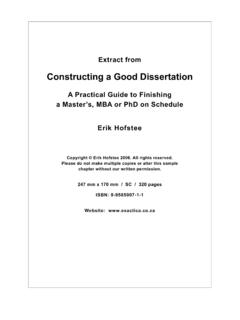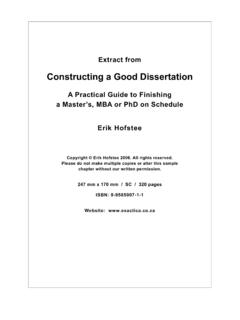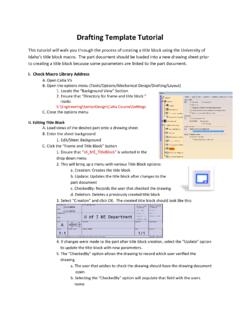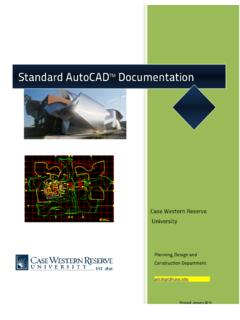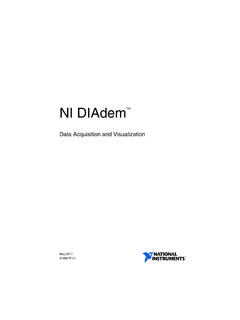Transcription of Constructing a Good Dissertation - Contents
1 Extract fromConstructing a Good DissertationA Practical Guide to Finishinga Master s, MBA or PhD on ScheduleErik HofsteeCopyright Erik Hofstee 2006. All rights do not make multiple copies or alter this samplechapter without our written mm x 170 mm / SC / 320 pagesISBN: 0-9585007-1-1 Website: table OF Contents PART ONE: Foundation 1: The Postgraduate The Academic Method Strategy Skills Foundation 2: Project Timelines Gantt Charts Foundation 3: Topics: What They Are and What They Are Not Focus Choosing a Good Topic Topic Scoring Foundation 4: Thesis What a Thesis Statement Is The Role of a Thesis in an Academic Work Devising a Thesis Statement Some Points to Remember Criteria for Good Thesis Statements Foundation 5: Dissertation Contents and Order Adaptations Alternate Structures Length Headings, Introductions and Conclusions A Dynamic table of Contents Foundation 6: Index Recording Your Research Structuring Your Dissertation Drawing up a Dynamic table of Contents Writing Your Dissertation Foundation 7.
2 Research Sources Preliminary Research Detailed Research Secondary Research Finding Secondary Material Recording and Organising Secondary Data Primary Research Sourcing Data Collecting Data Organising Primary Data Foundation 8: Dissertation Contents Pre-approvals The Proposal as a Quasi-contract Changing Your Work Defending Your Proposal Foundation 9: Influencing the Choice of Supervisor Managing the Relationship Advice Conflicts Foundation 10: Dissertation Depression and Planning Intellectual Requirements Loneliness and Isolation Time and Timing Believing in Your Work Determination If You're Considering xPART TWO: THE Chapter 1: The What Belongs in an Introduction Background Information Problem Statement Research Questions Research Objectives Thesis Statement Delineations and Limitations Definition of Terms Assumptions Significance (Rationale) Chapter Overviews Chapter 2.
3 The Literature The Purpose of the Literature Review Your Credentials Theory Base Context Significance Originality Structuring the Literature Review Categorising Works Ordering Categories The Internal Order of Categories Concluding the Literature Review Balance Selecting Works to Include Academic Reading ..101 Reviewing Books and Chapter 3: The The Role of the Method Strengths and Weaknesses Designing a Method The Method Chapter Typical Structure Introduction Your Research Design Your Methodology Research Instruments Data Analysis Limitations Ethical Procedures Overview of Common Research Questionnaires and In-person Interviews.
4 132 Chapter 4: The What Belongs in the Body Structuring the Body Guiding Principles Typical Structures Symmetry Directing Your Reader Analysis and Engaging Other Charts, Tables and Other Chapter 5: The What Belongs in a Conclusion Summary of Findings Discussion of Problems Conclusions Implications for Existing Theory Recommendations for Implementation Summary of Contributions Suggestions for Future Research Chapter 6: Appendices ..165 When to Use Appendices Chapter 7: Formatting and Formatting Additional Pages Binding Your Work The Chapter 8: The Dissertation Defence (viva voce).
5 179 Preparation Questions (and Answers) xiPART THREE: SUPPORTING Article 1: Academic Writing ..187 Before You Start General Academic Writing Tips Paragraphs Sentences Style Grammar Writer s Article 2: Structure Flow Evidence Mathematical/statistical Errors Writing Formalities content Checklist Editing Checklist Proposal Checklist Article 3: What Not To Four Certain Ways to Fail Common Dissertation Errors 21 Ways To Substantially Increase Your Chance of Failure Article 4: The Cum Laude The Basics Distinguishing Characteristics Originality Article 5.
6 Marking Your Marking Sheets Evaluative Reports Corrections Typical Marking Typical Evaluative Report ..231 PART FOUR: Postscript 1: Bringing It Back to Basics ..239 Your Plan Your Thesis Statement Your Method Your Structure Your Supervisor Your Editing Hand It In! The Most Useful Tips Postscript 2: Online Downloads Discussion Forum Study Groups THE HARVARD REFERENCING FURTHER READING ..275 NOTES ABOUT THE xiiTABLE OF FIGURES Figure 1-1. Sample general Dissertation Figure 1-2. Sample Gantt chart for a Dissertation proposal ..12 Figure 1-3.
7 Topic Figure 1-4. Topic scoring sheet ..17 Figure 1-5. Criteria for good thesis statements ..26 Figure 1-6. Delineating the thesis Figure 1-7. The classic Dissertation Figure 1-8. Alternative Dissertation structure (individual studies)..39 Figure 1-9. Typical length of the parts of the Figure 1-10. Index card Contents and layout, front and Figure 1-11. Using index cards to structure your Figure 2-1. The funnel method of structuring a literature Figure 2-2. Generic method chapter layout ..112 Figure 2-3. Typical body structure Figure 2-4. Typical body structure Figure 2-5.
8 Typical body structure Figure 2-6. Simple symmetrical structure of the Figure 2-7. Symmetrical structure of the Figure 2-8. Slightly asymmetrical structure of the Figure 2-9. Asymmetrical structure of the
